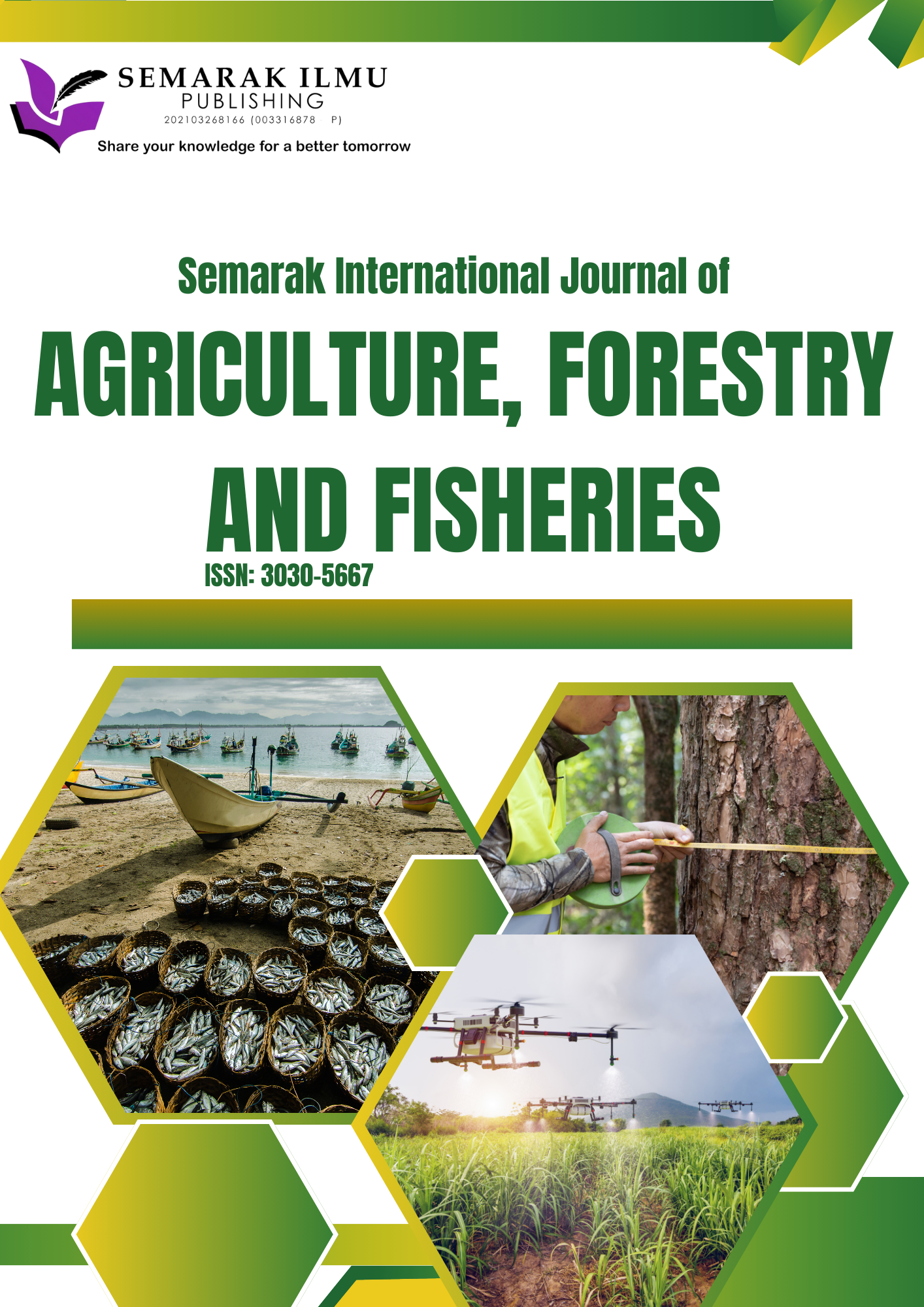Growth Patterns, Status of Well-Being and Trend Analysis of Three Commercially Important Clupeid Species from Selangor Landing Port
DOI:
https://doi.org/10.37934/sijaff.1.1.1929Keywords:
Length-weight relationship, condition factor , growth pattern, landing trend, autoregressive integrated moving averageAbstract
Length-weight relationships (LWRs) and condition factors are vital to quickly understanding the fitness and well-being of fish. There is currently no available evidence on LWRs, condition factors and landing trend for these three species and an absence of this information will result in improper management and monitoring of fish species. In this study, the growth patterns, status of well-being and trend analysis of commercially important clupeid species from the west coast of Peninsular Malaysia were studied. Sardinella lemuru, Amblygaster sirm and Nematalosa japonica were selected due to high commercial value and conservation status. S. lemuru was specifically categorized as near threatened by the IUCN with decreasing global populations. Total length (cm) and body weight (g) of S. lemuru, A. sirm and N. japonica were accounted for in this study, which was obtained from the wet market in the west coast of Peninsular Malaysia. The relationships between length and, weight and, condition factors (Fulton’s, KF; relative condition factor, Kn; Allometric) were assessed. The allometric equation; W = aLb was used to evaluate the length-weight relationships while KF = 100W/Lb and Kn = W/aLb were used to estimate fish condition factor. ARIMA (1,1,1) and ARIMA (0,1,0) models were utilised to forecast the fish landing pattern until 2030. The results showed that the coefficient of determination R2 values varied between 0.263 (Sardinella lemuru), 0.5187 (Amblygaster sirm) and 0.8443 (Nematalosa japonica) and b values ranged from 0.0959 to 2.1005. From this, all three fish species have shown a negative allometric growth pattern b<3, reflecting a relatively slow growth rate and size of fish. No positive allometry was detected for any of the sampled fish species. A low value of relative condition factor (Kn < 1) suggests that all the fish species in this study have poor physical characteristics due to inadequate food resources, and unsuitable habitats for expansion of the fish population. Prediction based on Autoregressive Integrated Moving Average (ARIMA) model showed that N. japonica would increase gradually in the coming years, while S. lemuru would remain constant. This study contributes to the knowledge base for S. lemuru, A. sirm and N. japonica in the west coast of Peninsular Malaysia, and is crucial in terms of understanding the ecology of the habitat for supporting conservation strategies, and the restoration and management of these species in future.













